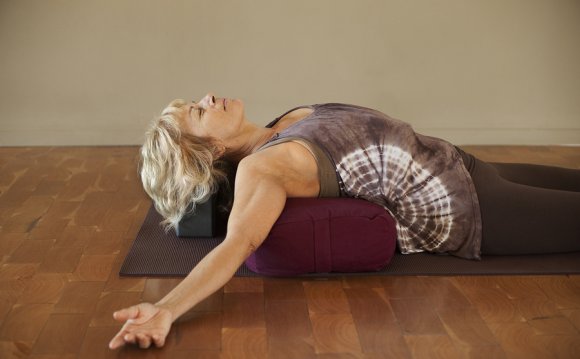
It was a little disgusting, sure, but this wasn’t my first vinyasa rodeo. I’ve been practicing yoga for more than a decade, in rooms larger and more crowded than this one. I’d chosen to attend this class when I very easily could have practiced at home by myself, just as efficiently. So my real concern with the guy wasn’t the sweat and the breathing—well, maybe the breathing a little—it was that he was working too hard.
Every pose, every flow, was a grind for him. I could sense the pure effort streaming out of his practice. He heaved into poses, planting a closed, meaty fist on the floor when a nice gentle set of fingertips would have done just fine for what was, in essence, a simple twist. At every turn, he chose the most challenging option, the most extreme iteration. He was making it needlessly difficult.
Dude, I thought. It doesn’t have to be this way. Relax.
A lot of people approach yoga with a P90X intensity, like it’s some sort of extreme sport with a definitive endpoint. As instructors get younger and younger, and more and more generations removed from source teachings, yoga has taken on an athletic form that seems almost incomprehensible to me, and I definitely started studying it in the modern age. It’s vigorous and exciting, but also potentially very dangerous.
I came up through the Ashtanga system, a classical style that, when practiced in its traditional form, makes other kinds of yoga look like Ring Around The Rosie. It’s athletic, but without all the frou-frou Hallelujah iTunes playlists and fancy hybrid poses like “Wild Child.” No Ashtanga teacher is ever going to tell you to “flip your dog.” They’re just going to count to 10 in Sanskrit and wrench you so deeply into a forward fold that your folded back heel will go deep into your asshole. Unsurprisingly, I got hurt. Often.
My yoga took a turn for the better a couple of years ago when I realized that I didn’t have to work so hard. I still needed to show up every day, or at least several days a week. You don’t get anywhere in life by doing absolutely nothing. But this also wasn’t the Marines, for Ganesha’s sake. Effort was still required, but it didn’t need to be so damn effortful.
The Yoga Sutras, that inscrutably dull foundational text of all modern yoga, teach us to practice diligently, but not be attached to the results of our practice. I used to interpret that as meaning “do your super-hard yoga every day and eventually you’ll be able to get your head to the floor.” But I’ve increasingly realized that it means “relax, breathe, focus your attention, be nice to people whenever possible, and don’t do anything stupid because knee replacements are expensive.”
If I wanted a hard-core workout, I’d go to boot camp at the open-air gym with the other Type A 5 a.m. risers. But that’s not me. I’m disciplined enough to unroll the mat, usually sometime between 10:30 and noon, but I also know the value of taking a little nap halfway through the practice. I’m a happy yogi because I work at my practice gently, with patience.
So that’s what I did on that Sunday, even while the guy next to me was splashing more liquid off his body than a toddler in the tub. When it was all over, he sighed as deeply as a roomful of Ryan Gosling fans watching The Notebook.
“That was a great class, ” he said.
He seemed happy, and who am I to judge? I’m glad he’s finding a yoga that works. But I would advise him—and you, for that matter—to take it easy once in a while. Yoga is not a footrace. There are no winners. As my teacher Richard Freeman is fond of saying, “Some people think that if they do enough yoga, it will give them a perfect body. And it will. But they’re still going to die. And then they’ll have a perfect dead body.”
So if you want to practice yoga like Rocky Balboa pounding a side of beef in a meat locker, well, you go right ahead. That’s your yoga and your prerogative. I’ll be the slightly overweight middle-aged guy right next to you, taking a nap.









